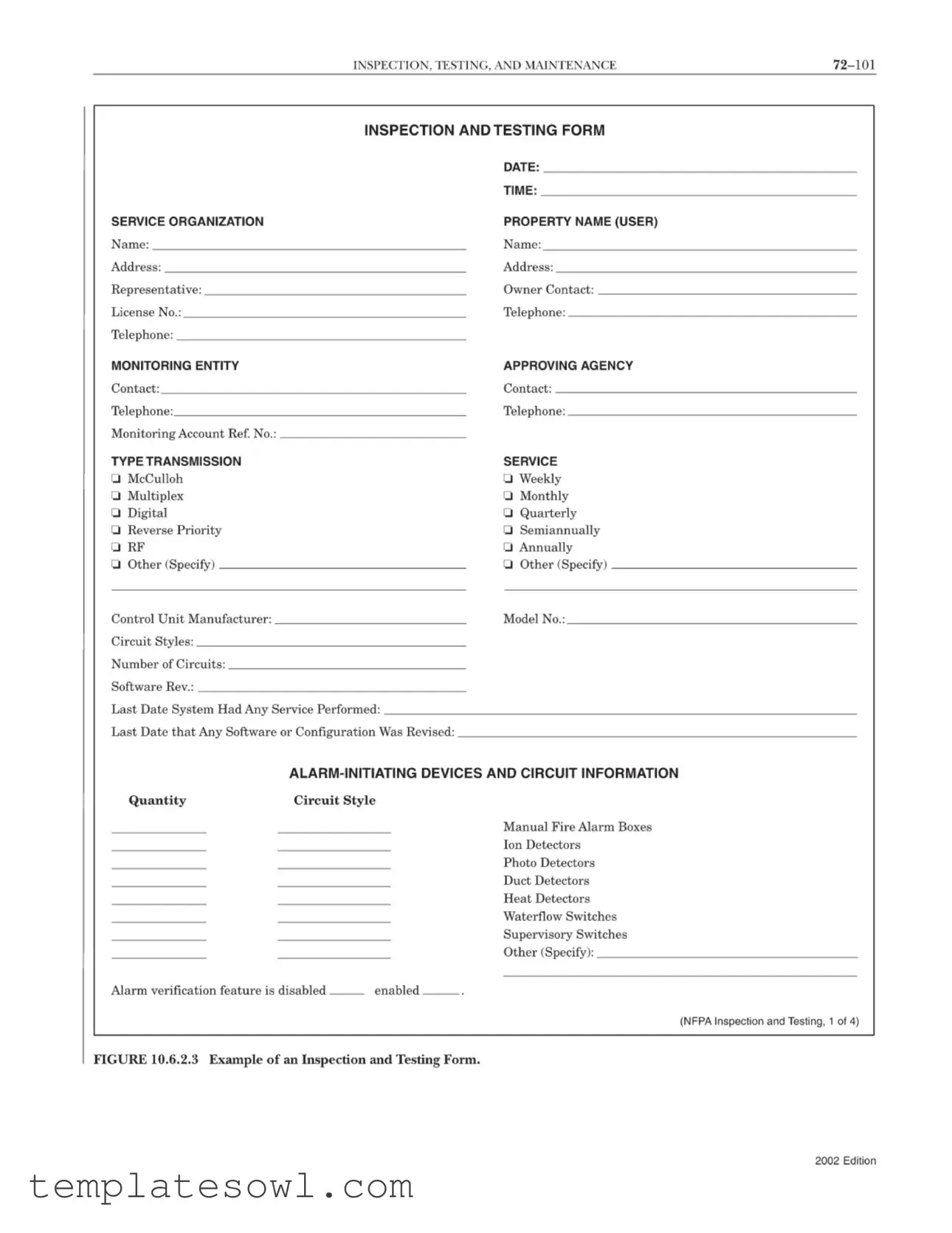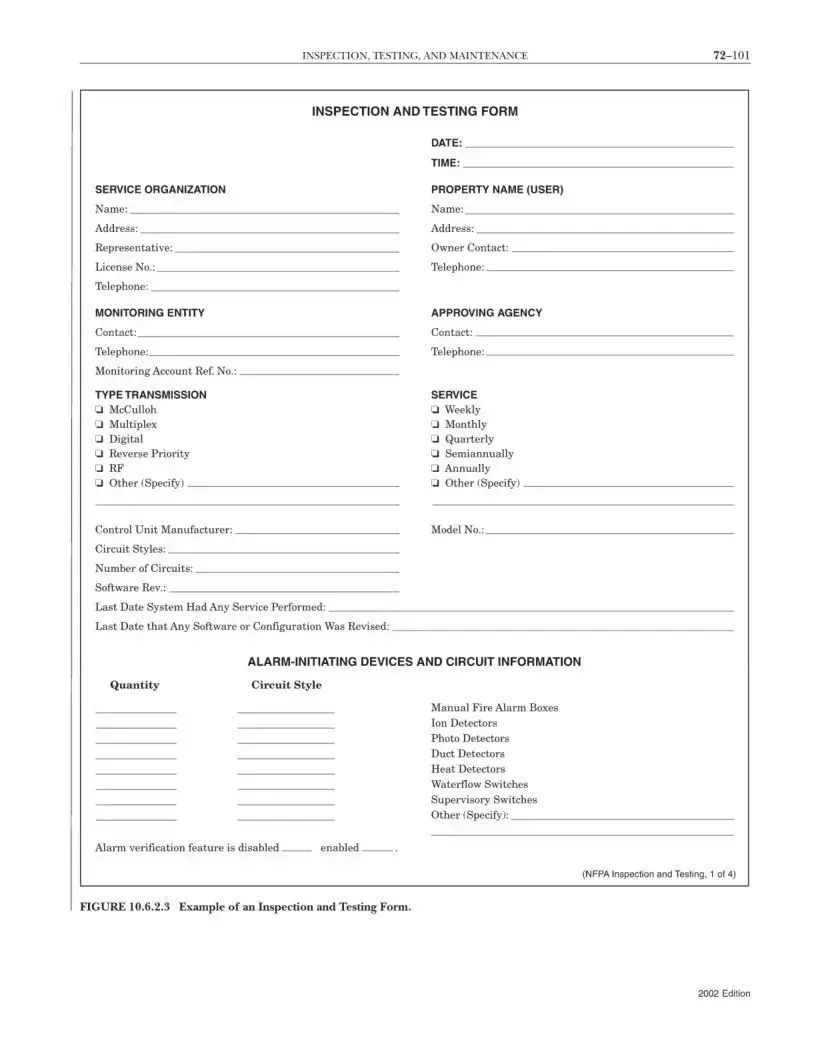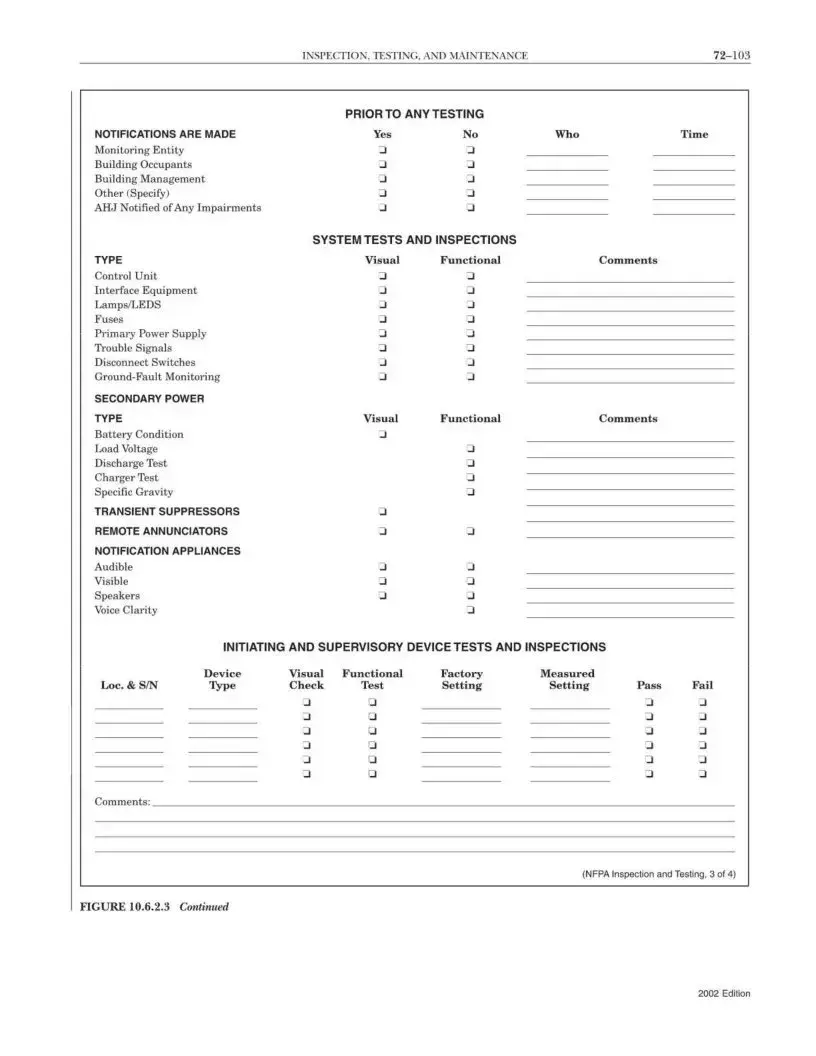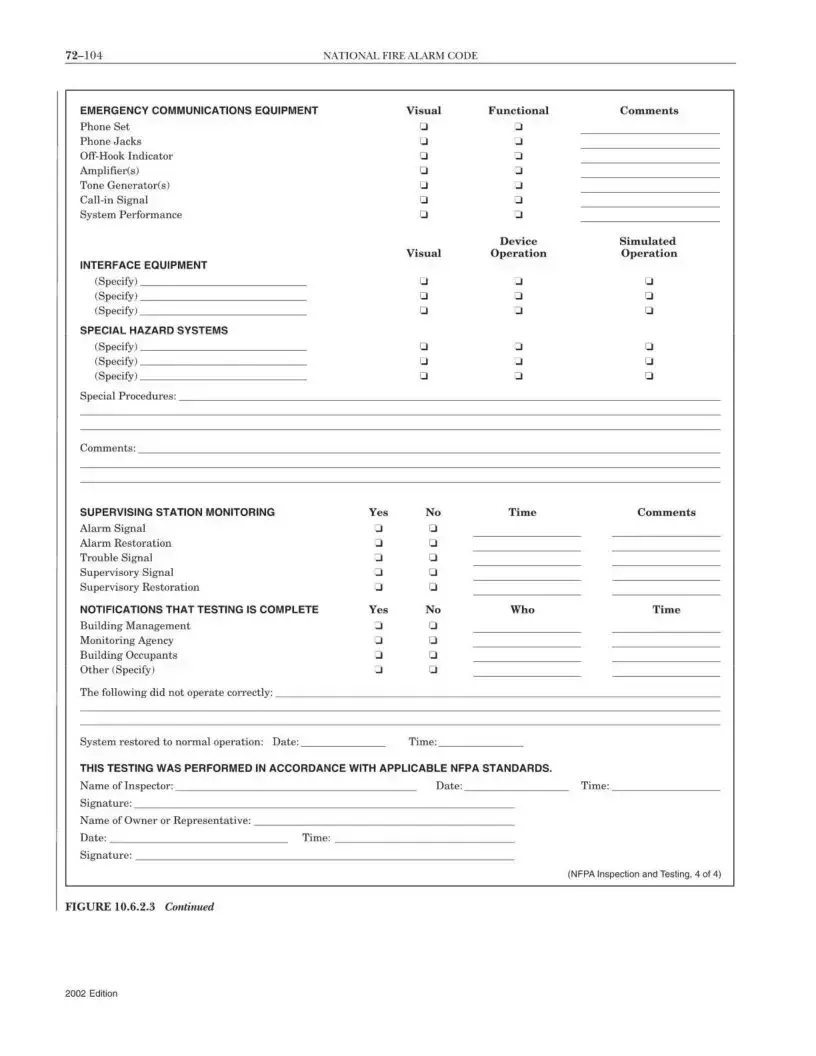What is the purpose of the Inspection and Testing Form?
The Inspection and Testing Form is designed to document the evaluation of a fire alarm system's components and their operational status. It ensures compliance with fire safety regulations and provides a detailed account of any testing or maintenance performed on the system.
What information is required on the form?
Key information includes the date and time of inspection, service organization details, property name, contact information for representatives and owners, type of transmission service, control unit specifications, and details about alarm-initiating devices and power supplies. This comprehensive data collection aims to verify the effectiveness and reliability of the fire protection system.
How often should inspections be conducted?
Inspections should follow the schedule established by applicable regulations or recommendations, typically occurring monthly, quarterly, semiannually, or annually. Depending on the specific requirements of the jurisdiction, the frequency may vary, requiring compliance with the relevant NFPA standards.
What are the components tested in the form?
The form covers a variety of components including control units, primary and secondary power supplies, alarm notification appliances, supervisory devices, and emergency communications equipment. Each component undergoes a visual and functional evaluation to ensure proper operation and performance.
What happens if a component fails during testing?
If a component does not operate correctly during testing, this should be noted on the form, along with any corrective actions taken. The system should be restored to normal operation as soon as possible, and these actions must also be documented, ensuring accountability for maintaining safety standards.
Are notifications required prior to testing?
Yes, notifications are required before testing begins. The monitoring entity, building occupants, and management must be informed, as well as any other relevant parties. This helps ensure safety during the testing process and provides transparency regarding the system's operational state.
Who is responsible for signing the form?
The form must be signed by both the inspector and a representative of the organization that owns or operates the fire alarm system. This provides a confirmation that the inspection was performed as documented and acknowledges the results of the testing.
How is the information used after testing is complete?
The information collected on the form serves multiple purposes. It maintains compliance with safety regulations, assists in identifying trends in system performance, and facilitates ongoing maintenance planning. Furthermore, it acts as proof of adherence to safety standards during inspections by regulatory authorities.




